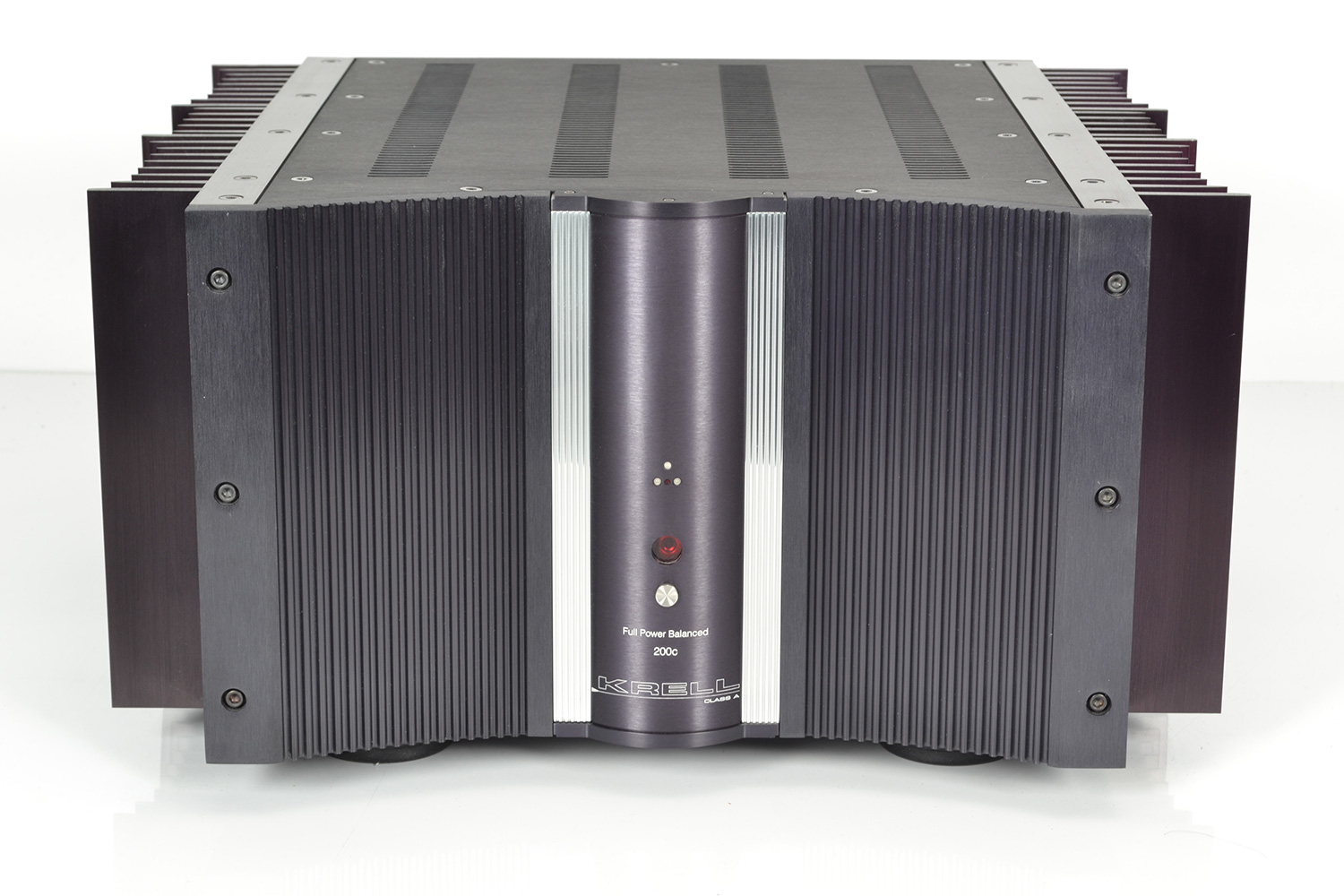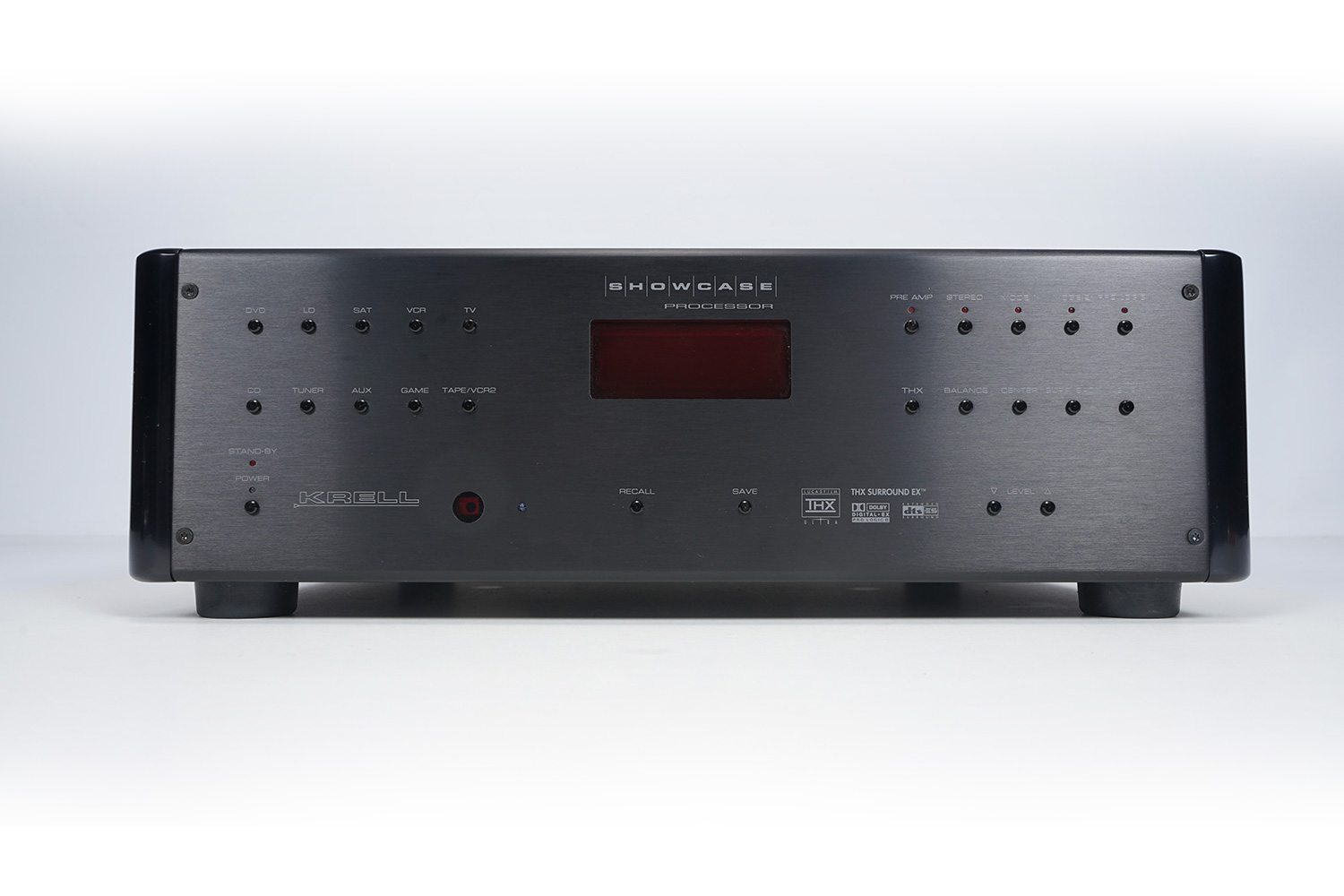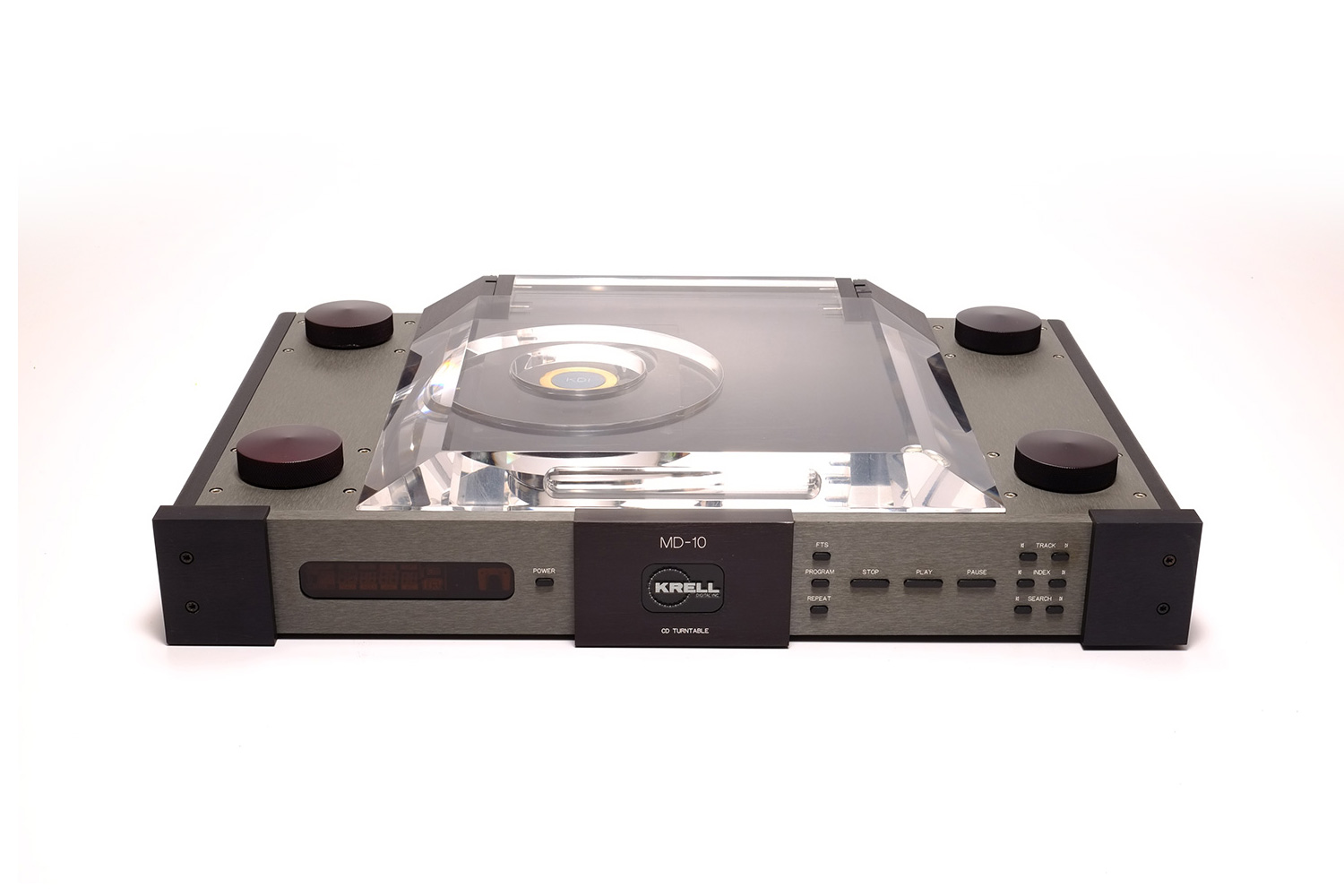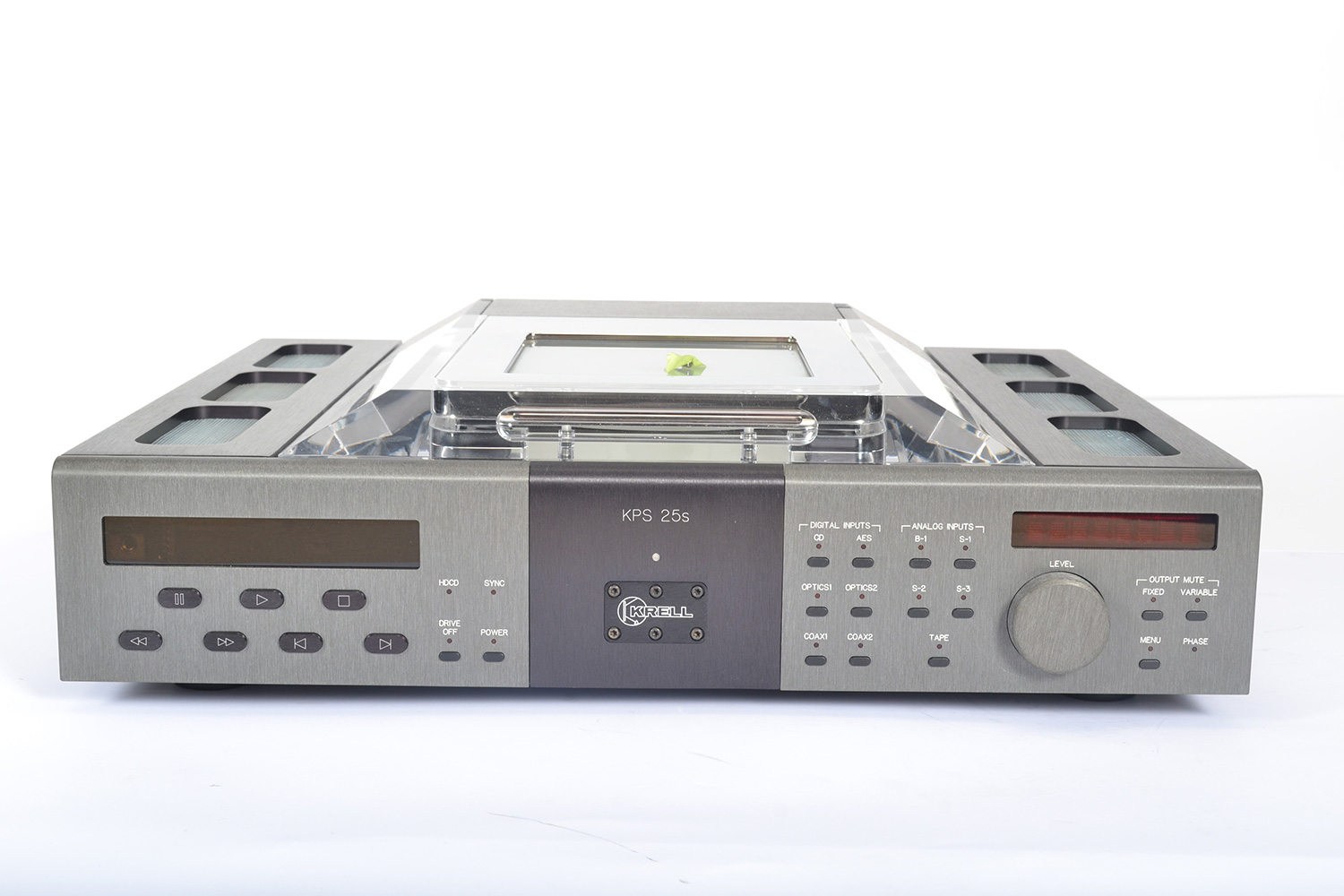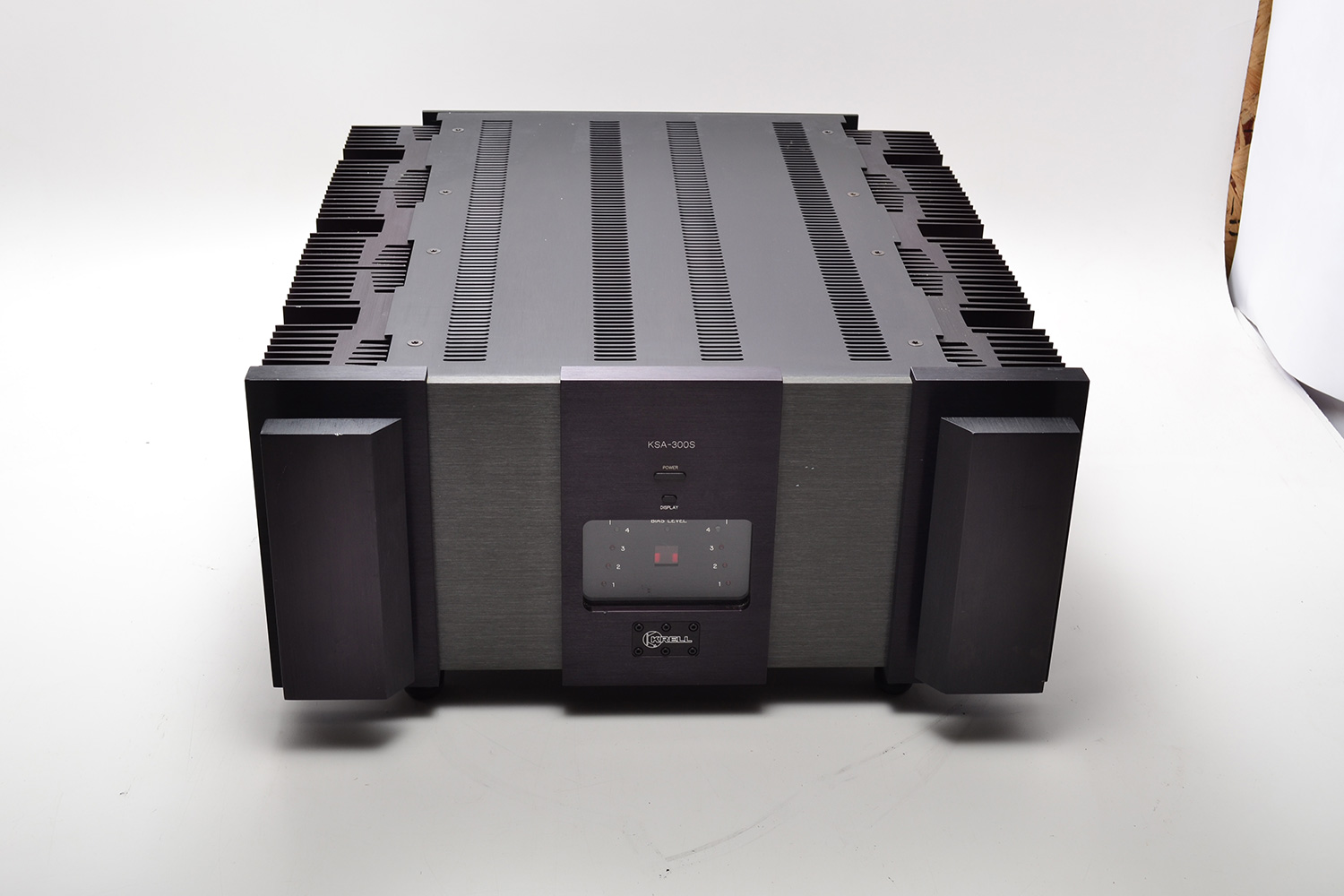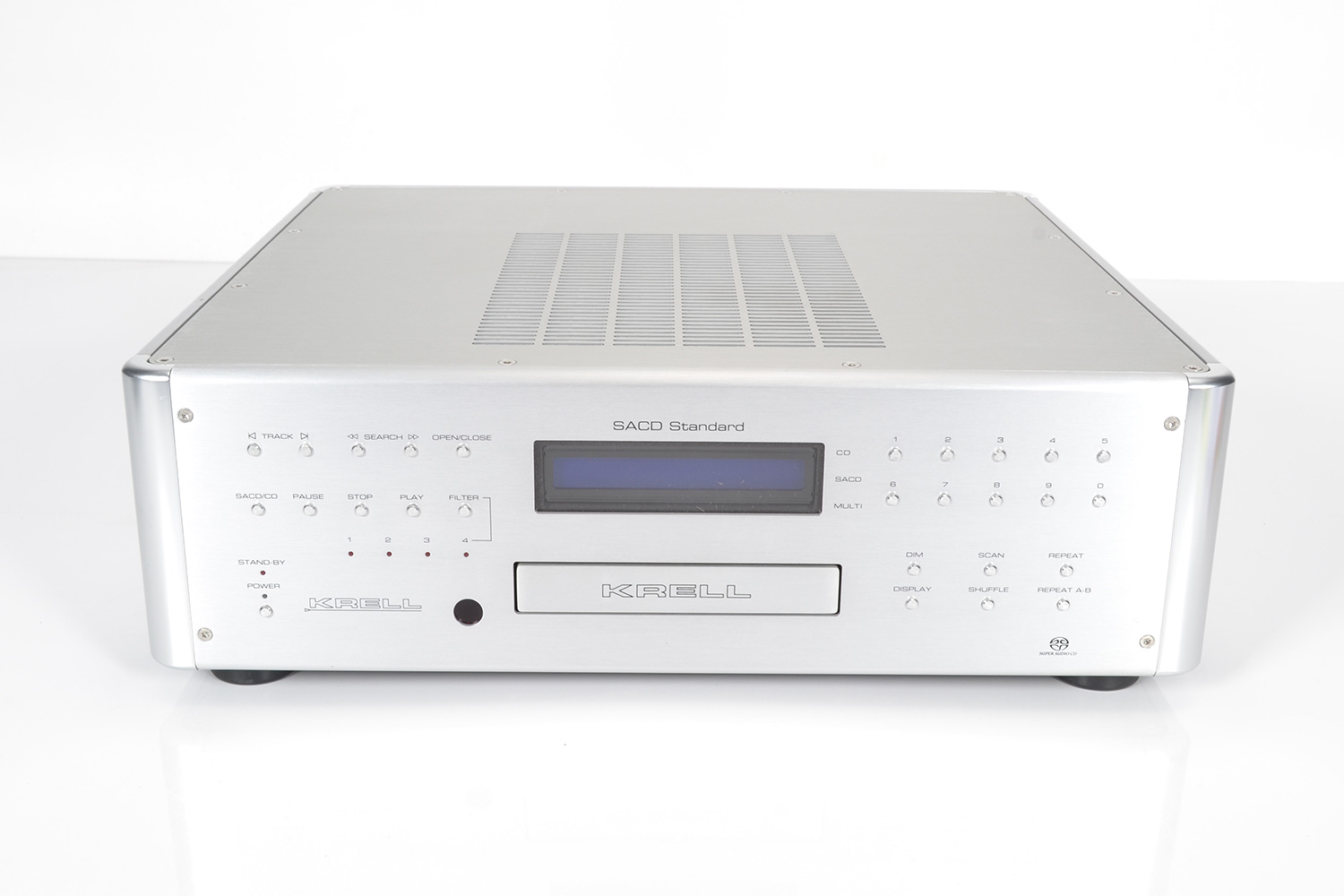
Krell is one of the most dependable brand names when it comes to high-end audio systems. For years the brand has been recognized by audiophiles throughout the world as equipment that delivers clear and consistent quality in music.
What are the specs for the Krell SACD Standard?
- Type:
- SACD/CD player
- Frequency Response:
- 20 Hz to 20 kHz SACD & CD (+0.0,-0.5 dB)
- Signal to Noise Ratio:
- SACD 105dB (A weighted), CD 108dB (A weighted)
- Total Harmonic Distortion:
- SACD -75dB, CD -82dB (20Hz to 20kHz)
- Analogue Audio Outputs:
- Pair balanced XLR connectors (L, R channels), 6 single-ended RCA
- Digital Audio Output:
- optical & coaxial, CD only
- Inputs:
- IR in, RS232
- Triggers:
- 12 V input and also 12 VDC output via a 3.5 mm mini plugs
- Dimensions:
- 17.3 x 5.7 x 16.5 (WxHxD in inches)
- Weight:
- 25 lbs.
What else to know about the Krell SACD Standard?
"But it is the performance of the Krell when playing SACDs that really sets this player apart. What the CD playing section of the Krell conspicuously doesn't have, and which the SACD section has in spades, is the ability to reproduce the scale of a musical performance. When listening to compact disc (and this is something that may not be obvious until you've also heard the same recording from SACD), the ear is naturally drawn to the leading element in the mix -- typically the soloist or lead instrument. It is the mark of a good CD player that it is still possible to follow background instruments, or individual parts or instruments in a group, even when they are not the primary focus. But SACD through the Krell (and remember we're talking about stereo SACD here) offers a much broader focus. Perhaps more correctly, it offers no focus at all, and that's precisely what makes it so compelling. Yet this is what makes some observers complain about, that SACD lacks presence. It isn't so. SACD offers broad, wide soundstaging and a natural sense of distance and depth. Lead instruments and voices are not favored unduly, but you do get something close to what you hear at a live musical event: namely a real sense of scale and breadth, and a quality that hints at envelopment even through two loudspeakers, without the usual goldfish bowl magnification of the centre of the soundstage. It is the antithesis of the of horn gramophone effect, where the performers clustered around the recording horn and played as loud as they could manage to make themselves heard. Switch to multi-channel and the effect is even more holographic, with more grip and the same exquisite sense of detail, though as usual with SACD the rear channels levels are often than not far too high for comfort. There were individual discs where the SACD sound quality (still in stereo) was difficult to distinguish from the CD recording, but this was most often with recordings that were not particularly good to start with. Better recordings, one example used in this test being the Benjamin Zander/Philharmonia Mahler 6 on Telarc, simply sounded more finely detailed and lucidly expressed via SACD. The slight sense of a cartoon caricature, all precise leading edges and little substance that can undermine compact disc, is much better handled by the Krell in high resolution mode, where the music seems subtly but noticeably more natural and expressive. It simply sounds better. Conclusions Although the Krell SACD Standard is not exactly bargain basement given the recent high tech universal players from Pioneer, Denon and others that also include digital outputs from DVD-Audio and SACD and high-grade video, at prices that Krell can't hope to match. The SACD Standard nevertheless represents extremely good value for money by going directly for the jugular with a bullet proof player that does a basic job supremely well at what by high end standards is an extremely realistic price." - EnjoyTheMusicBrief History of McIntosh
Long mapped-to Binghamton New York – the current headquarters and manufacturing center for Krell Labs – not many people know the brand was originally launched outside of the Nation’s Capital in Silver Spring Maryland, in 1949. In 1956, the brand built their original facility in New York, according to the official brand website.
StereoBuyers has purchased tens of thousands worth Krell brand equipment since 2014, with individual buys ranging from $100 to well over $50,000. If you are moving, ready to upgrade, or have Krell equipment you do not or will not be using, why not contact us today to find out if it is worth good money?
If you are interested in selling your used Krell equipment to us in the greater NYC area or Colorado, please click here to fill out a Free Quote Form and we will get back to you. If we agree on terms, we come to meet you where you want, and pay cash.
The following images show actual Krell equipment purchased by StereoBuyers.
